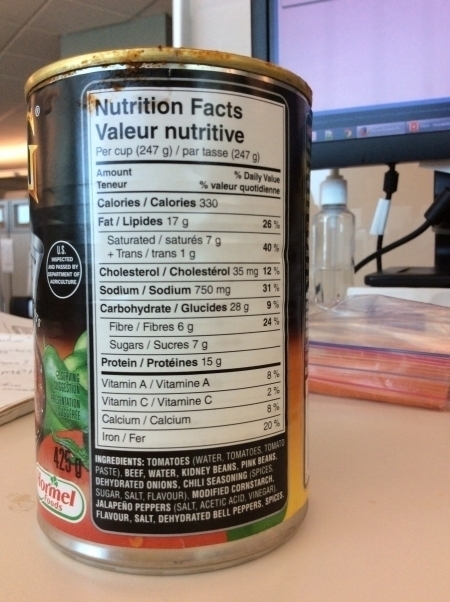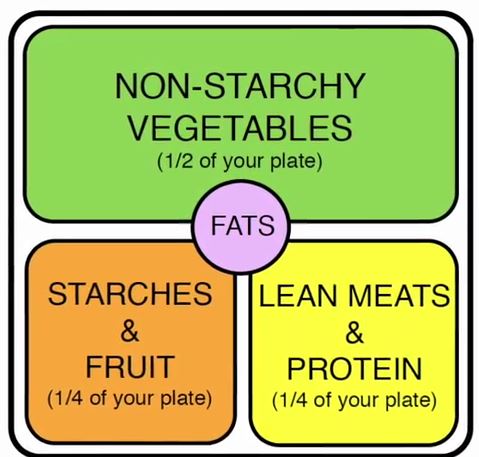Today for lunch I brought a can of chili. Hormel Brand Stagg chili and I have to admit I love this stuff but there are a few shortcomings to say the least.
If you make homemade chili then you are in for a real treat. Chili is high in protein thanks to the beans and meat, has lots of vegetables for your vitamins and minerals, and the cayenne pepper that people put in chili to spice it up is very good for you as well.
Not so in a can.
Serving Sizes vs Can Size
 But the reason that started me on this bit of a rant is the fact that the nutritional information on the can list all the numbers for 247 grams of chili when in fact you can see by this picture that the can actually weighs in at 425 grams. You have to do some crazy math just to breakdown those nutritional information numbers.
But the reason that started me on this bit of a rant is the fact that the nutritional information on the can list all the numbers for 247 grams of chili when in fact you can see by this picture that the can actually weighs in at 425 grams. You have to do some crazy math just to breakdown those nutritional information numbers.
Protein 425 gram can divided by 247 grams per serving times 15 grams of protein per serving equals 25.8 grams of protein per can.
So the protein in here is pretty good for a serving, a serving of course being one can of chili.
Trouble is that this happens in all the boxes, bags, and cans of food in the grocery store. Take a look next time, serving sizes are small always 8 chips, or 10 crackers, or in this case 2/3 or so of a can.
Sodium in Canned Foods
The second thing that drives me crazy is the sodium content. As a father of a kidney patient I can tell you what our nutritionist told us a couple of years ago.
Everybody should limit sodium. Sodium leads to hypertension, kidney problems, high blood pressure, osteoporosis, and the average american diet includes about 3400 mg of sodium. Much more than the 2000 mg we should stay under
The numbers that we use at home which is what anyone should use in life is that you should have no more than 250 mg of sodium per snack and 500 mg sodium per meal.
So using these numbers lets do the crazy can math again
Sodium 425 gram can divided by 247 grams per serving times 750 mg of Sodium per serving equals 1290 mg of sodium per can. This is most of a days sodium all in one can. And it is not just them. Almost all canned products are very high in sodium.
Look on a can of even the “Healthy Soup” types in the grocery store. You will see that the sodium levels are really high.
Low Nutrient Levels in Canned Food
Finally, although it is really hard to check when you are looking at a nutrition label, the amount of nutrients in canned foods tends to be crappy. You get these overprocessed, overcooked veggies and all the preservatives that can kill nutrients. Although the Canned Food People say that freshly canned fruits and vegetables do not lose much of their nutrients.
Cans and plastic bottles are often lined with bisphenol A, or BPA, which has the ability to leech into the food. In large doses, BPA can act as the hormone estrogen and may be linked with an increased risk of some cancers.
You know what the much better option is? Frozen! Believe it or not frozen veggies and frozen fruit tend to be frozen very close to the picking time and the freezing does not affect the nutrients. This means that you get all of those great phytonutrients, minerals, and vitamins without hanging around in the field to pick it.
My normal lunch, and I mean almost every single workday is leftovers from dinners that we make at home. We will cook dinner, make extra and package it up for me to take the next day or freeze for later. This I think is the best and cheapest option but of course, just like today, sometimes the plans just don’t work out.




